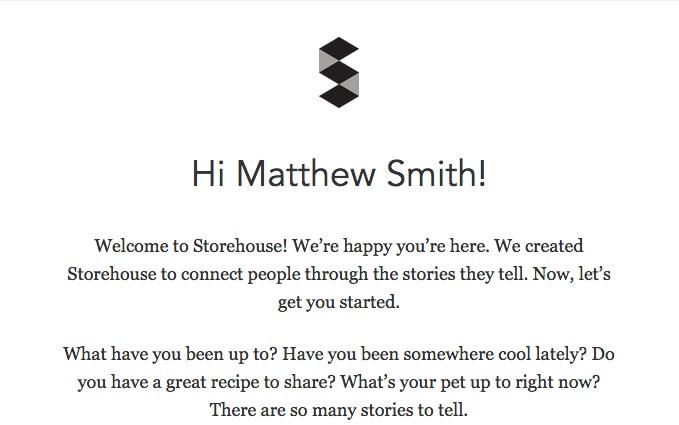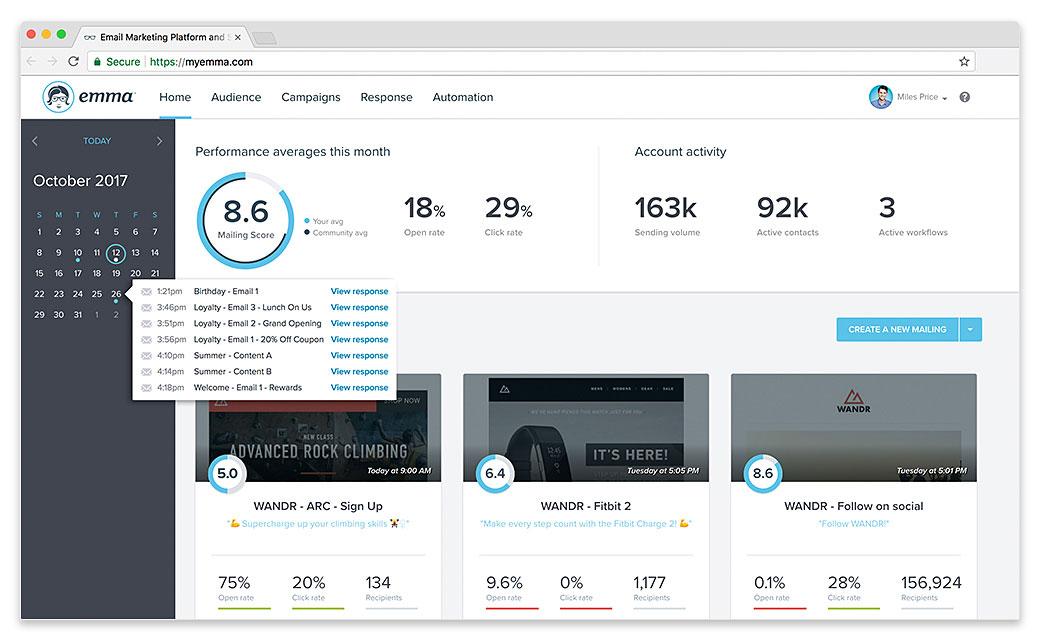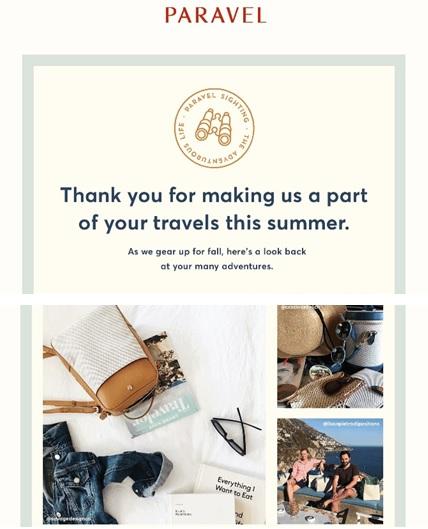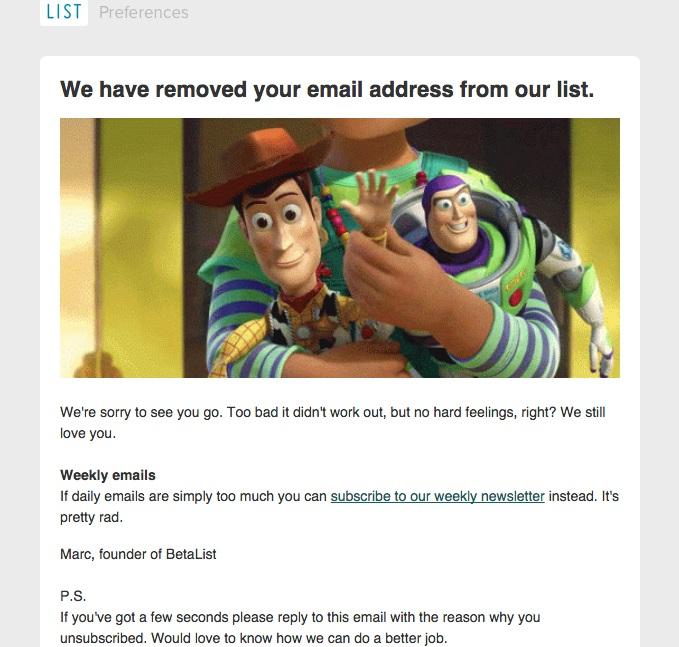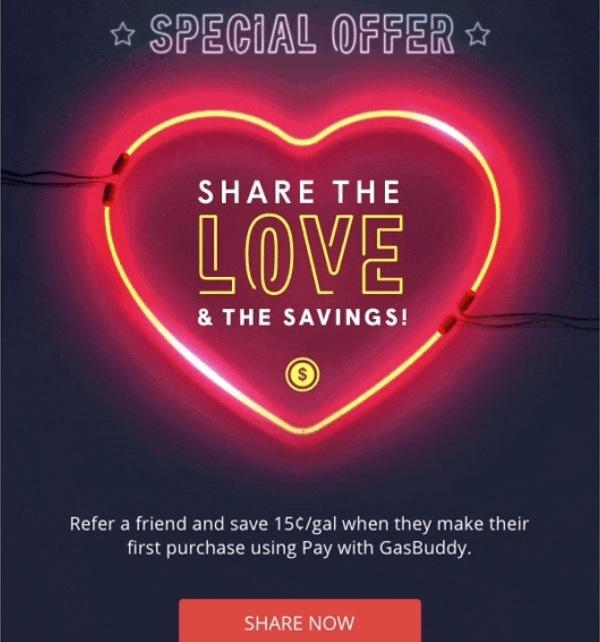The ultimate checklist for a successful email welcome series
Your email welcome series is likely one of the most important email campaigns you’ll ever have.
It’s also the one that can take the most time, be the most daunting, and leave you feeling frustrated. We understand—we’ve been there and we’ve been able to help numerous businesses successfully craft their welcome series of emails.
To make things easier on you, we’ve decided to create the ultimate welcome series checklist. We’re sure that when you implement the tips below, you’ll have a truly successful email campaign.
Remember your “why.”
Source: Really Good Emails
Before we get into the “how,” let’s take a moment to review why you need to have an email welcome series. Since this series can be a little more involved than other campaigns, knowing why you’re doing it will help you push through the creative process.
You need a welcome email series because…
-
Creating an automated email welcome campaign now will save you a lot of time down the road.
-
You’ll be able to provide immediate value to your audience, which is a great way to make a good first impression.
-
It will get your audience excited about what they can expect from you in the future.
-
Your subscribers are 50% more likely to open a welcome email than any other kind of email.
Create an awesome campaign: The ultimate email welcome series checklist.
The goal of your welcome series should be to make a good first impression, provide value, and build trust with your audience. Here are some steps that will help you do that.
What to do before you send your first email.
Before you even sit down to write your first email, break up your tasks:
1. Your welcome email(s)
2. Your subject line(s)
3. Content calendar
4. A/B testing, analytics, segmentation.
Figure out how many emails you want in your email welcome series. Next, determine how long each email will take to write, edit, and revise. Then, decide what kind of design you want—everything from the background color and which Emma template to use, to whether you’ll utilize any graphics.
Once you’ve figured that out, add everything to your content calendar (or use Emma’s own marketing calendar). While your calendar should be flexible, you’ll want to stick to it closely to ensure you actually get the work done.
Source: Emma
Before you write your welcome email:
Spend some time setting your expectations for the campaign. Ask yourself:
-
How do I want my subscriber to benefit from this series of emails?
-
What offer am I going to promise them and deliver on? Is there a white paper or eBook that needs to be sent? Once they subscribe, will they be able to join a private community?
After your intentions have been set, create a plan—and an email welcome series—that will help you meet your (and your subscribers’) expectations.
Writing your welcome emails:
How many emails will you send your subscribers? In some cases, one email is sufficient. In others, you’ll want to send a series of them.
You can send five days of email video content that is linked to why they subscribed in the first place. For example, if a subscriber signed up for a five-day challenge, you’ll want to send them an email each day to inspire them.
Another option is to send them an opt-in reward, like an eBook or report, and follow that up with an initial welcome email and subsequent follow-up emails that offer even more value.
Figure out what type of sequence you want to create and then you can start crafting the content.
Your subject line and call to action
Two of the most important components of your email series are your subject line and call to action.
Your subject line should be short and to the point. It can be welcoming, or it can express gratitude for signing up. You can also reiterate your opt-in offer.
Source: Really Good Emails
All emails should have a call to action. Invite readers to check out a new product, your current sale, or to read your latest blog. Clicking on the call to action button will get them back to your website, which improves the chances of turning your reader into a customer.
Making sure you don’t end up in the spam folder.
There’s nothing worse than finding out your emails are being tagged as spam. Here are some things you can do to avoid ending up in the spam folder.
-
Add your address to the email. This shows the email provider that you’re a legitimate company.
-
Make it clear who the email is from. Your business name should be easy to see so the recipient knows that yours is an email that they actually requested.
-
Address the recipient by name instead of using something generic like “hi” or “Dear friend.”
-
Avoid using spam words in your email, particularly your subject line.
Choosing images, videos, and GIFs.
You can make a statement with a simple, straightforward welcome email. However, there are times that call for some added oomph, and you can get this with beautiful images, funny GIFS, and informative videos.
Source: Campaign Monitor
To make a good impression on your readers, make sure your images are optimized for mobile devices. After all, you never know when or where they’ll be receiving your emails.
Images shouldn’t be too large—otherwise, they’ll take too long to load or won’t load at all. This is really frustrating for your email recipient.
Always choose graphics that are in harmony with your brand and your message. It can be a jarring experience to sign up for an offer from a company only to find out that their overall message doesn’t really resonate with you after all.
Sending the email: How to ensure success during your welcome campaign:
One of the most important things you can do is set up your welcome email schedule. People tend to be the most engaged with a brand within the first 24-48 hours of subscribing to their email newsletter. You need to take advantage of that by starting your welcome campaign early.
Send your initial welcome email straight away. Then, schedule other emails to go out regularly after that. There’s nothing worse than wearing out your welcome, so you don’t want to send one email after another on the same day.
If you decide to send a series one after another over the course of a week or so—that’s fine. However, don’t keep that kind of pace up. After the introductory period, taper off to once a week or month.
Make sure your subscribers feel safe.
A lot of people are wary of giving out their email address. They’re worried about spam, viruses, unwanted promotions, and having their information sold to third parties.
Ease their mind during the opt-in process by telling them that you will not share their email with anyone else. In your emails, let them know that your emails and website are secure. Also, make sure you have a way for them to unsubscribe to your emails if they want to.
Source: Really Good Emails
What to do at the end of your campaign:
Once your campaign has been successfully sent out to your subscribers, what should you do next?
You’ll want to pay close attention to your analytics. Your email welcome series can provide you with a lot of insight around what type of content your readers are interested in receiving.
After this initial campaign, continue to find out what your readers want by asking them to complete a survey from time to time. This will help you determine what kind of content to send in the future. It can also impact your offers, products, and services, so don’t hesitate to get some input from your target audience.
Finally, ask your subscribers to:
-
Refer a friend
-
Forward your email to anyone they think would be interested
-
Follow you on social media
The more interaction you have with your readers—the better!
Source: Really Good Emails
Wrap up
Your welcome email series is one of the most important email campaigns you will ever create. It’s also the most involved, which can be daunting.
We’re here for you, though. We know that with the tips above, as well as those outlined in our other resources, you’ll be able to create a welcome series that makes a lasting impression.
To create an amazing welcome series:
-
Figure out what you want to offer your subscribers.
-
Pay close attention to your subject line and call to action.
-
Use caution when incorporating images and other graphics.
-
Do all you can to make your subscribers feel safe.
-
Pay close attention to analytics.
Making your email welcome series one that stands out will help ensure the success of your future email campaigns. Spend the time necessary to craft a well-thought-out series, not neglecting the copy or the design. Follow the tips above, as well, and you’ll create a welcome series that will fill you with pride.
A vital component of every marketing email is a call to action. Our resources can help you learn about why this component relates to the success of your campaign and how you can knock yours out of the park.
MOST RECENT ARTICLES
Want to engage your audience and grow your brand? Try Emma's robust easy-to-use product today.

